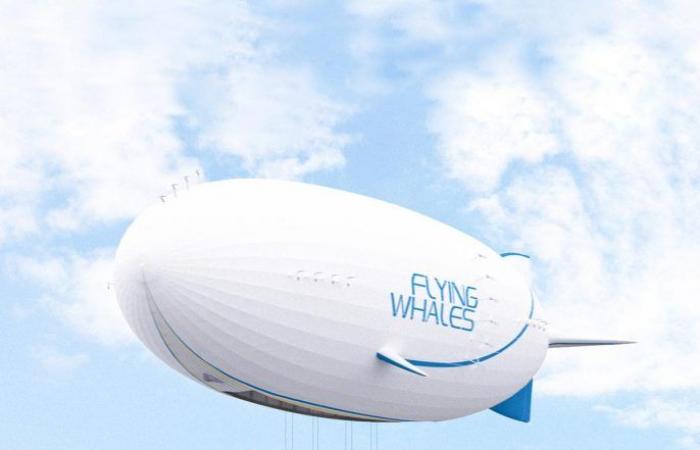OWhere is Flying Whales, the project to install, in Laruscade, a unit for the construction of huge dirigible balloons designed to transport heavy loads and to be able to operate in places that are difficult to access? Last October, the Environmental Authority rejected the project, arguing that its environmental impact was too great. A stop, “which led us to remobilize with the Region and the Community of Communes”, confides Sébastien Bougon, CEO of Flying Whales.
Explaining and improving were the two main areas of work. The first point was the confirmation of the choice of Laruscade, “initially, six sites had been selected, four were rejected for questions of airspace occupation, and another did not want to welcome us. And then, it is also a strong political choice to reindustrialize this sector in great economic difficulty”. In terms of environmental developments, “on the loading and unloading zone, a parking lot encroached on a wetland, we are going to move it and superimpose it”.
Gap
The stream on the site, a tributary of the Saye, will also be the subject of work. “It flows poorly, we will remove the culvert to facilitate ecological continuity, we will clean the banks.” A structure must also be built, “so as not to have too much impact on the banks” and, there too, facilitate the movement of wildlife. “This brings an additional cost,” says Sébastien Bougon. The compensation for the environmental impact will amount to 400 hectares. “You should know that of the 50 hectares of land needed for the project, only 20 will be built.”
Will the adjustments, clarifications and improvements be enough to tip the decision in the right direction this time for Flying Whales and its partners? We will have to wait a few months to find out the decision of the State services. “The building permit application must be sent within the next ten days,” was indicated on Friday, June 28 at the Communauté de communes Latitude Nord Gironde. For a response expected in December and a start of work hoped for in 2025. And Flying Whales says it is ready to respond to all questions and comments from the population and/or environmental protection associations, in particular during the public inquiry that will undoubtedly take place. “There is a real gap between the vision of the site and what the reality will be,” believes Sébastien Bougon.
“The solution is electricity”
Continuing to convince is particularly relevant for the boss of Flying Whales: a report from the investigation unit of Radio France called into question, with the help of experts on the subject, the feasibility of the industrial project he is supporting. “We need to know where these testimonies come from, from anonymous employees who have left the company and the initiators of airship projects that have failed. And they were small airships, nothing to do with us,” he dismisses. He also rejects outright the various arguments used against him over the past twelve years since the launch of Flying Whales without, for the moment, anything concrete coming out. “Building an aeronautical project takes at least ten years, we are in a normal development rhythm,” he replies. Time, according to him, for technical and economic studies, the search for financing and partnerships (50 companies in the consortium) and the design of the engineering.
“Building an aeronautical project takes at least ten years, we are at a normal development pace”
Questions have also been raised about the stability of the future hovering craft. “The solution is electricity. Thirty-two small electric motors will be installed to ensure this stability. Afterwards, we are told that we will not be able to fly everywhere and in all weathers, but this is also the case for helicopters, for example. It is clear that we will not fly if there is a wind greater than 100 km/h and we will not cross the Atlantic. Depending on the data, we will decide whether we can fly or not,” says Sébastien Bougon, who specifies that 55 commercial agreements have already been signed.
As for the choice of helium instead of hydrogen for the balloon, “we had no choice. Helium guarantees perfect safety while hydrogen explodes. Of course, it is more expensive, it accounts for 50% of the price of the machine but we do not consume it, we store it and purify it once a year. And that is also why I wanted Air Liquide to invest in the capital, it allows us to secure the price and the supply”, explains Sébastien Bougon. And the good investment of public funds in this adventure, the answer is simple: “Flying Whales will create 300 jobs.”






